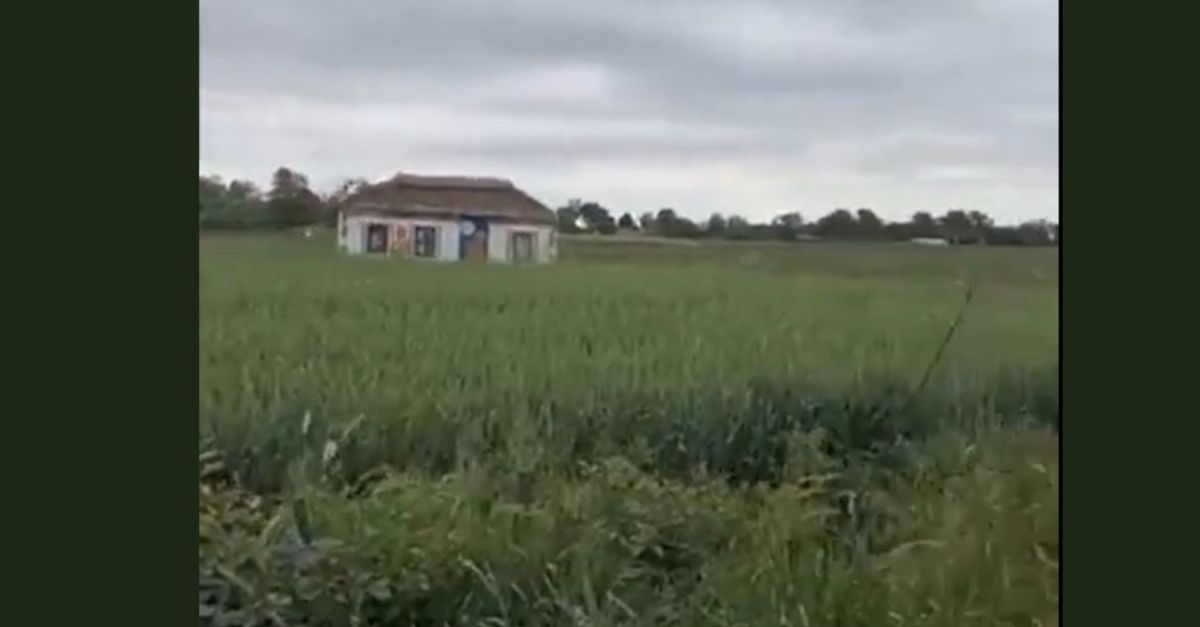Breaking News
Moving House new camo for Ukrainian vehicle ?.
A video taken in Ukraine has leaked on social media, showing an impressive camouflage deception. A military vehicle is disguised as a house. The house moves at 30 km/h, but still appears as a house at first glance. Let's try to understand this better.
Follow Army Recognition on Google News at this link

House decoy hiding a military vehicle , probably a MBT.(Picture source: OSINT sources)
On the front lines, one of the main risks is drone attacks on vehicles, capable of targeting weak points. Drone strikes are almost always successful. There are many countermeasures, such as full cope cages, anti-grenade grills surrounding a vehicle, and even the advanced "turtle tank," a tank entirely covered with a superstructure, which typically makes it difficult for FPV drones to use shaped charges.
On the Ukrainian side, guerrilla tactics are more common, such as using decoys. This technique aims to waste enemy resources by making them spend ammunition and time on fake targets. This strategy is old, reminiscent of Operation Fortitude during World War II, which aimed to deceive the Germans into thinking the Allied landing would occur in northern France instead of the actual location.
Today in Ukraine, artillery systems, cannons, and even anti-aircraft missiles are simulated to attract Russian strikes. To a lesser extent, decoys of tanks and armored vehicles have also been observed.
In this case, the house is a large-scale camouflage, likely covering a MBT underneath. This hypothesis is supported by the nature of the terrain the camouflaged vehicle is moving on and its speed. Unlike a simple cope cage, this is a decoration designed to appear as an innocuous element. This is a mix between the Russian full cope cage and the Ukrainian use of decoys.
We know that this vehicle is Ukrainian and, given the terrain, is currently operating in western Ukraine. The goal of such camouflage is twofold: to protect the vehicle from long-range strikes by preventing it from being recognized as a military target and to blend in easily with surrounding buildings when stationary, providing a critical moment of hesitation that can assure victory in battles.
However, it is unlikely that this type of camouflage will become widespread, but it is fascinating to see old techniques being revived in the first high-intensity war of contemporary history.


























